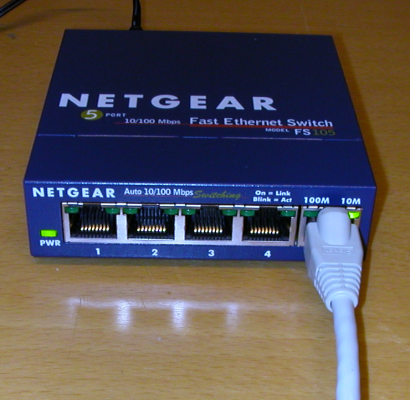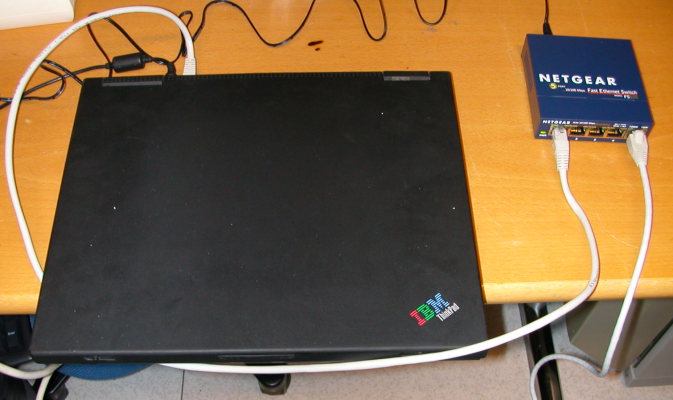- Wireless networks are not allowed at the student residential houses network
- Don't use devices that has an embedded DHCP server
- No more than five devices connected pr. port
- Do not use Windows Internet Connection Sharing
Don't use devices that have an embedded DHCP server (routers/wireless access point). Unauthorized DHCP servers may cause an network outage for the rest of the student residence network and we will shut down your connection for 14 days!
Windows Internet Connection Sharing (ICS) has an embedded DHCP server, do NOT use ICS.
Feel free to contact us studentby-drift@usit.uio.no if you have any questions.
These switches are known to work:
- Linksys EG008W-EU
- Netgear NGFS605 (299,- at Elkjøp)
- SMC SMCFS5
- Sunsway/STLab N-153 8-port 10/100 (225,- at komplett.no)
- SMC EZ Switch GS5 5-Port 10/100/1000 (SMCGS5 EU) fan less (495,- at komplett.no)
- CNet Switch 16-Port 10/100 (CSH-1600) (495,- at komplett.no).
- D-Link Switch 5-Port 10/100/1000 (DGS-1005D) (395,- at komplett.no)
- D-Link Switch 8-Port 10/100/1000 (DGS-1008D)
- Netgear FS105
Switches known NOT to work:
-
CNet CSH/CNSH-800W
It's sufficient that one computer authenticates, you can connect the other device when the first computer is authenticated. Once both computers/devices are online, you may remove the computer that did the authentication without loosing network access on the second computer/device. The person who does the authentication is responsible for all the traffic from the port! If you live in an apartment with two network ports (such as a family apartment) we recommend that you use both ports instead of sharing access from one of the ports. If you want to connect a computer/device that does not support IEEE 802.1X authentication such as Xbox/IP phone, you'll have to use a switch in order to connect the latter kind of device.
All switches on the list of tested products supports "auto crossover/mdx" on all ports, so there is no need for a crossover cable and/or a dedicated uplink port. If you have a switch not mentioned in the list, please check the documentation. Uplink ports are usually the port with the highest number and marked accordingly.
Start by checking that one computer works when it's connected directly in the port in the wall. Then, connect the switch from the port.

Connect the computer that is supposed to take care of the authentication. This computer must be configured according to our instructions. Please see: http://www.uio.no/english/services/it/network/student-residential-network/help/

Ensure that the connection works, then connect the second computer/device. As there is no need for authentication on this computer/device, is should be sufficient to get ip address and related configuration from our DHCP server. This is usually the standard configuration. Every computer/device that is properly connected and configured should have an ip address that starts with 193.157.
